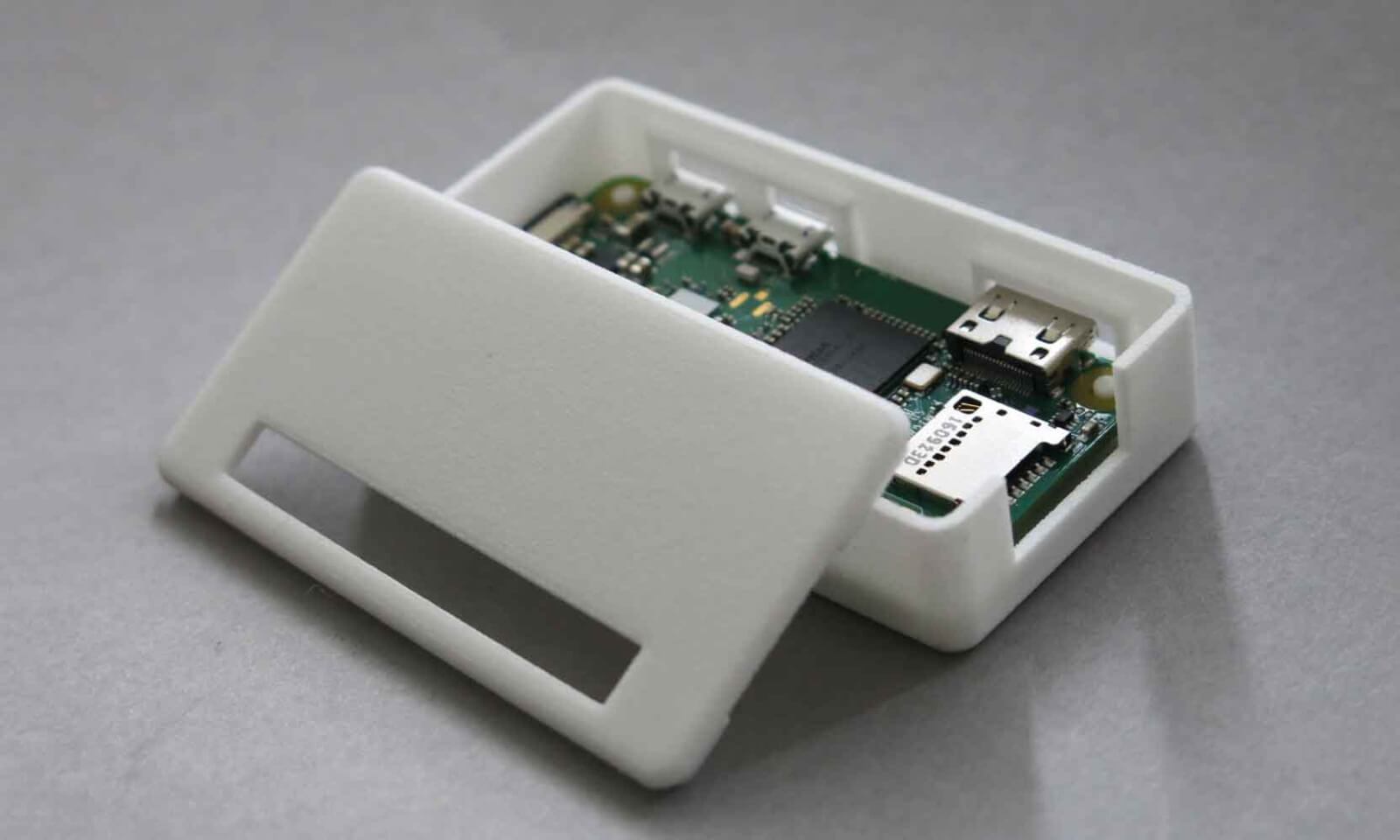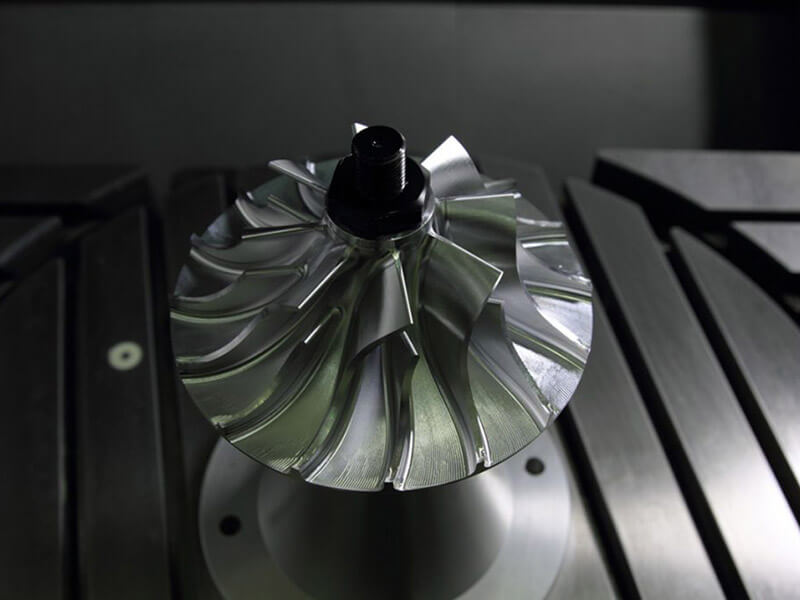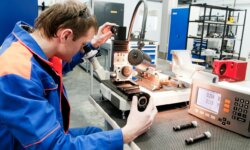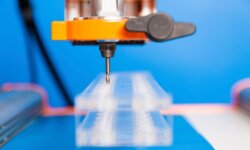For developers of electronic products, a robust and aesthetically pleasing enclosure can turn a scrapheap-bound piece of junk into a market-conquering phenomenon.
Both prototypes and end-use parts require enclosures, which represent the vital finishing touch of an electronic device and which keep the components and wiring in place to ensure durability, function and a professional appearance.
When it comes to manufacturing enclosures, the possibilities are near-endless.
From laser-cut wooden boxes, to sheet metal casings, to expertly CNC machined aluminum shells like the enclosure of a MacBook laptop, enclosures can be made using a wide variety of processes and materials.
3ERP has years of experience creating these sorts of enclosures, via several manufacturing technologies: CNC machining, injection molding, sheet metal fabrication and more.
This article looks at some of the ways 3ERP can meet your enclosure-building needs.
What is an enclosure?
An enclosure is the outer shell of a product that contains its electronic components and other parts.
Typically made from rigid plastic or metal, an enclosure plays several roles. For many common products, an enclosure does the following:
- Keeps electronic components in place
- Protects fragile electronic components from external hazards like dust and liquid, as well as bumps and knocks
- Allows for easy connection of inputs and outputs
- Provides portability
- Makes the product recognizable via its shape, color, branding, etc.
Although enclosures are typically one of the last concerns of a product developer, they can play a role even during the early prototyping stage. Electronics housed within a solid box are far more manageable than a mess of wires that dangle around like a bowl of spaghetti.
And, perhaps more importantly, even a simple prototype enclosure can be enough to impress a potential investor. A simple 3D printed box with attention to detail and branding, for example, can provide a much more vivid picture of a potential product than a drawing or concept.
Enclosures are typically composed of two halves — so the product can be opened up for repairs, battery changes, etc. — and use screws, mounts or compartments to keep specific components in the right place.
They may also feature holes in their surface for external switches, screens and connectors for input/output and power cables.
What are the best materials for electronics enclosures?
There are many material options when making enclosures for electronics.
For DIY projects, a laser-cut wooden box may be entirely sufficient. For professional products, however, a variety of plastics and metals can be used.
One important material consideration is strength and durability, because some products will be subject to more strenuous activity than others.
An enclosure for a bicycle speedometer, for example, will need to be resistant to rain, dirt and intense vibration. A pocket calculator, on the other hand — while only marginally less complex than a speedometer — will endure virtually no physical wear and tear, and its material demands will therefore be less strict.
In general, metals make stronger and more durable enclosures than plastics.
Most electronic devices — computers, remote controls, digital radios, etc. — require rigid enclosures in order to function properly. In some cases, however, a partially flexible, rubber-like enclosure can be made in order to increase durability.
The desired physical appearance of an enclosure can also be an important factor in choosing a material.
Some enclosures, such as those for handheld gaming devices, are designed to be transparent or translucent to reveal the electronic components within. For these products, a versatile plastic like acrylic may be preferable.
And some enclosures may demand a specific surface finish. If a product needs an anodized coating, for example, then the enclosure should be made from aluminum.
In general, the manufacturing process used to build the enclosure will inform the material options, and the material demands may also inform the choice of manufacturing process.
CNC machining electronics enclosures
CNC machines are one of the most versatile tools for making electronics enclosures. Machining centers can cut metals and plastics, and parts can be made directly from a digital CAD design.
One advantage of using a digital manufacturing process like CNC machining is repeatability: once you’ve machined one enclosure, you can use the same design file to make thousands more identical copies.
CNC machines also allow for highly geometrically complex enclosures. While other processes are only really capable of making “boxes,” CNC machining allows for the creation of smooth curves, asymmetrical structures and complex individual features.
It may be a little slower and costlier than more rudimentary methods like sheet metal forming, but machining is a highly effective means of creating enclosures.
Example materials:
- Aluminum
- Stainless steel
- Acrylic
- Acetal
Injection molding electronics enclosures
For the mass manufacture of simple consumer products, there is no better method than injection molding, which can be used to fabricate plastic parts in large quantities.
Molding is ideal for simple plastic enclosures, and is used to create housings for products like handheld controllers, sensors, electronic keys, displays and much more.
Injection molding can be used with tough thermoplastics like ABS, which won’t shatter under force, and other versatile plastics like acrylic and acetal. Non-rigid plastics like TPV and TPE can also be used for products that require shock absorption — sports stopwatches, for example.
Although plastics are rarely used for the most physically demanding applications, the material versatility of injection molding presents suitable options for many products.
Electronic components can also be more firmly embedded within the enclosure by using a process like insert molding. Here, the molten plastic can be molded directly over the top of a metal insert, which could contain, for example, a light or sound-emitting component.
Example materials:
- ABS
- Polycarbonate
- Acrylic
- TPE
Sheet metal electronics enclosures
One of the most important applications of sheet metal forming is the creation of enclosures for various devices.
Although not especially easy on the eye, sheet metal casings are affordable, durable and easy to make. They are used on products like desktop computers and for countless industrial applications, both indoor and outdoor.
It’s easy to see why sheet metal fabrication is ideal for enclosures. With just three “bends,” you can turn a sheet of metal into an open-ended box. And by punching and stamping a few holes into that box, you’re already halfway to a functional enclosure.
Common metals used for enclosures include aluminum, steel and stainless steel, and a range of finishes can be added depending on the application. Aluminum 5052 is particularly valuable, because it can be bent to extreme angles without cracking.
Example materials:
- Aluminum
- Steel
- Stainless steel
3D printing electronics enclosures
Although 3D printing is not usually suitable for manufacturing products in large quantities, it is one of the most effective and affordable ways to produce one-off plastic prototype enclosures.
Enclosures can be designed using CAD software and sent straight to the 3D printer, and the manufacturing technology allows for a high level of geometrical freedom.
It is even possible to fully enclose electronic components within the 3D printed casing without the need for assembly.
3D printing is compatible with common enclosure materials like ABS.
Example materials:
- ABS
- PLA
- Polycarbonate
To build an enclosure for your electronic prototype or product, get in touch with 3ERP for a free quote. We’ll gladly offer advice about your best options.








